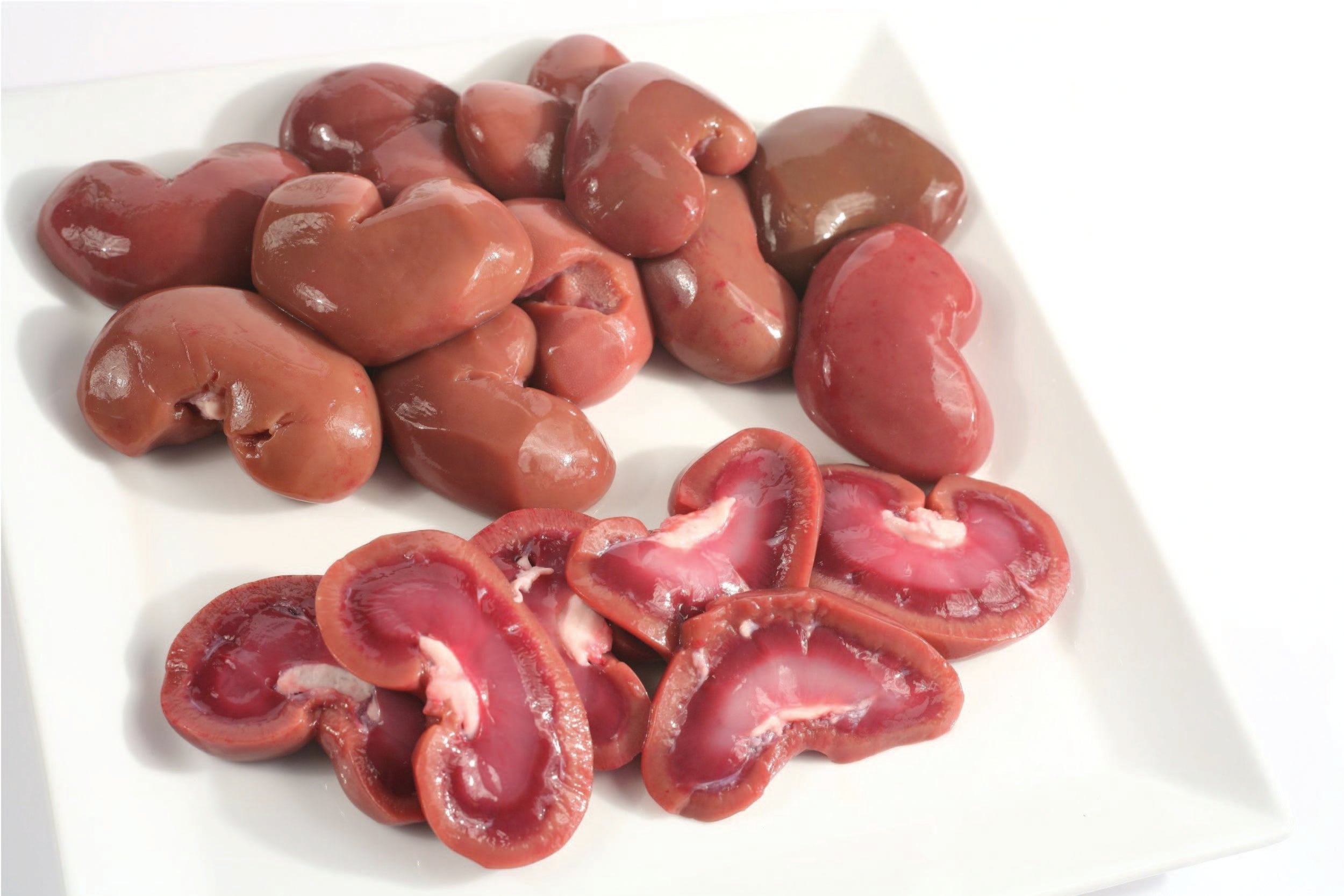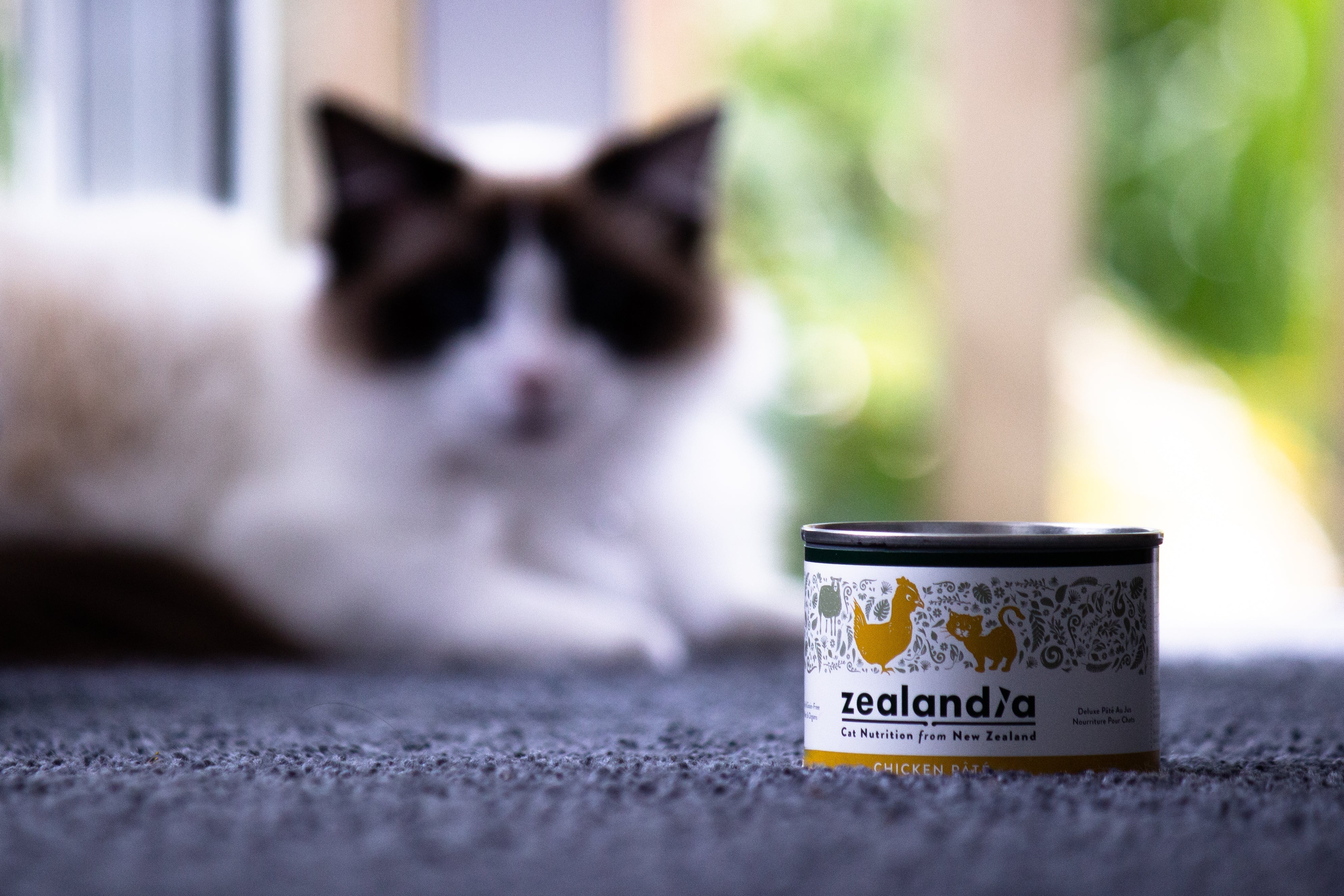The Benefits of Feeding Lamb Organs to Cats and Dogs

Written by Andrew Burch, Director - Zealandia Limited.
Feeding your pets a diet rich in nutrients is vital for their overall health, longevity, and well-being. While most commercial pet foods often only provide basic nutrition, incorporating natural, nutrient-dense food sources like lamb organs can significantly enhance your pet's diet. Lamb organs, including liver, heart, kidneys, lung, green tripe, and plasma, offer a plethora of benefits that contribute to optimal health for both cats and dogs. This article explores the advantages of feeding lamb organs to pets and provides insights into how to safely and effectively incorporate them into their diet.
Nutritional Value of Lamb Organs
Lamb organs are rich in essential nutrients that are often lacking or present in lower quantities in standard pet foods. These nutrients include:
- Proteins and Amino Acids: Organs are a high-quality protein source that provides essential amino acids crucial for muscle development, repair, and overall growth.
- Vitamins: Lamb organs are packed with vitamins such as A, B (including B12, riboflavin, niacin, and folate), D, E, and K. These vitamins support various bodily functions, including vision, immune response, and energy metabolism.
- Minerals: Organs are rich in minerals like iron, zinc, selenium, and phosphorus. These minerals play a vital role in oxygen transport, immune function, and bone health.
- Healthy Fats: Organs contain beneficial fats, including omega-3 and omega-6 fatty acids, which promote skin health, a shiny coat, and cognitive function.
Specific Benefits of Different Lamb Organs
Each type of lamb organ offers unique benefits due to its specific nutrient profile:
Lamb Liver
Lamb liver is often considered a superfood for pets due to its high nutrient density. It is an excellent source of vitamin A, which is crucial for maintaining healthy vision, skin, and immune function. The liver also provides a significant amount of iron, which is essential for preventing anemia and supporting red blood cell production. Moreover, lamb liver contains B vitamins, which are necessary for energy metabolism and neurological health.
Lamb Heart
The lamb heart is another nutrient-rich organ that is particularly beneficial for cardiovascular health. It is a good source of taurine, an amino acid essential for heart health, especially in certain breeds of cats and dogs that are prone to taurine deficiency. The heart also contains CoQ10, a compound that supports cellular energy production and acts as a powerful antioxidant. Additionally, the lamb heart is rich in B vitamins and iron, further contributing to overall vitality and health.
Lamb Kidneys
Lamb kidneys are highly nutritious and provide a concentrated source of essential vitamins and minerals. They are particularly rich in vitamin B12, selenium, and riboflavin. Vitamin B12 is vital for neurological function and red blood cell formation, while selenium acts as an antioxidant, protecting cells from damage. Riboflavin (vitamin B2) plays a crucial role in energy production and maintaining healthy skin and coat.
Lamb Lungs
Lamb lungs are less commonly used but are still a valuable addition to a pet's diet. They are low in fat and high in protein, making them an excellent choice for pets needing to maintain a healthy weight. Lungs also contain a variety of vitamins and minerals, including iron and vitamin C, which can help support overall health and immune function.
Lamb Green Tripe
Lamb green tripe is the nutrient-rich lining of a lamb’s stomach. It is highly beneficial for pets due to its natural probiotic content, which supports digestive health by promoting beneficial gut bacteria. Green tripe is also an excellent source of digestive enzymes, further aiding in nutrient absorption and digestive efficiency. Additionally, it contains a balanced ratio of calcium to phosphorus, crucial for bone health.
Lamb Plasma
Lamb plasma is a less common but highly nutritious component derived from lamb blood. It is rich in immunoglobulins and albumin, which support immune system function and help fight off infections. Plasma also contains a variety of essential minerals and vitamins, including iron and B vitamins, which contribute to overall vitality and health. Its bioactive peptides can support tissue repair and regeneration, making it beneficial for pets recovering from illness or injury.
Health Benefits of Feeding Lamb Organs to Pets
Feeding lamb organs to pets can provide numerous health benefits, including:
Improved Digestive Health
The high nutrient content in lamb organs can aid in digestion and promote a healthy gut. The abundance of B vitamins supports efficient energy metabolism, which can enhance overall digestive function. Additionally, organs like liver and kidneys contain natural enzymes that can aid in the breakdown and absorption of nutrients.
Enhanced Immune Function
The vitamins and minerals found in lamb organs, particularly vitamins A, C, and E, as well as selenium and zinc, play crucial roles in supporting a robust immune system. These nutrients help protect against infections, reduce inflammation, and promote the overall well-being of your pet.
Better Skin and Coat Health
The healthy fats, particularly omega-3 and omega-6 fatty acids, found in lamb organs contribute to a shiny and healthy coat. These fats help maintain skin moisture, reduce itching and inflammation, and support overall skin health. Vitamins A and E also play a role in promoting skin health and reducing the risk of skin disorders.
Enhanced Energy Levels and Vitality
The rich protein and amino acid content in lamb organs provide the building blocks for muscle development and repair. This, combined with the high levels of B vitamins, ensures that your pet has sustained energy levels and remains active and playful. The presence of CoQ10 in the heart also supports cellular energy production, further enhancing vitality.
Support for Healthy Growth and Development
For growing kittens and puppies, the nutrients found in lamb organs are essential for proper development. Vitamins, minerals, and proteins are crucial for bone development, muscle growth, and neurological health. Ensuring that young pets receive a balanced diet that includes lamb organs can support their overall growth and development.
How to Incorporate Lamb Organs into Your Pet’s Diet
While lamb organs offer numerous benefits, it's important to introduce them gradually and ensure they are part of a balanced diet. Here are some tips for safely incorporating lamb organs into your pet's diet:
- Start Slowly: Introduce lamb organs gradually to avoid digestive upset. Begin with small amounts mixed into your pet’s regular food and monitor for any adverse reactions. This is the same as feeding Zealandia for the first time. Introduce gradually over a 7-day period.
- Balance with Other Foods: Ensure that lamb organs are part of a balanced diet that includes muscle meats, vegetables (for dogs), and other essential nutrients.
- Cooking vs. Raw: While some pet owners prefer feeding raw organs, lightly cooking them can reduce the risk of bacterial contamination. Ensure that the organs are sourced from reputable suppliers.
- Variety: Rotate different types of organs to provide a range of nutrients and prevent nutrient imbalances. For example, alternate between liver, heart, kidneys, and lungs.
- Supplementation: If feeding organs alone does not meet all nutritional needs, consider supplementing with commercial foods or other natural sources of essential nutrients.
Potential Risks and Considerations
While lamb organs are highly beneficial, there are some potential risks and considerations to keep in mind:
- Overfeeding: Overfeeding organs, particularly liver, can lead to vitamin A toxicity, which can cause serious health issues. Stick to recommended feeding guidelines to avoid over-supplementation.
- Quality and Sourcing: Ensure that the lamb organs are sourced from high-quality, reputable suppliers to avoid contaminants such as hormones, antibiotics, and toxins.
- Individual Sensitivities: Some pets may have sensitivities or allergies to certain organs. Monitor your pet’s reaction and consult with a veterinarian if any adverse symptoms occur.
- Balance: Ensure that the overall diet remains balanced and includes all necessary nutrients to support your pet’s health. Organs should complement, not replace, a complete diet.
Case Studies and Anecdotal Evidence
Many pet owners have reported significant health improvements in their pets after incorporating lamb organs into their diet. For example, some owners have noticed shinier coats, increased energy levels, and better overall health in both cats and dogs. One notable case involves a dog with chronic digestive issues that showed remarkable improvement after lamb organs were introduced as part of a balanced diet. Another example includes a cat with a dull coat that became noticeably shinier and healthier after regularly consuming lamb liver and heart.
Here are some sources and case studies that provide evidence of the benefits of feeding lamb organs to pets:
- "Raw and Natural Nutrition for Dogs: The Definitive Guide to Homemade Meals" by Lew Olson: This book discusses various case studies where dogs with chronic health issues showed improvement after switching to a raw diet that included lamb organs. The book provides detailed accounts of how specific organs, such as liver and heart, contributed to better coat quality, increased energy levels, and overall health.
- "Canine Nutrigenomics: The New Science of Feeding Your Dog for Optimum Health" by W. Jean Dodds and Diana Laverdure: This resource includes several case studies and scientific evidence on the benefits of feeding nutrient-rich organs, including lamb organs, to dogs. The authors highlight improvements in digestive health, immune function, and coat condition in pets that were fed a diet incorporating lamb organs.
- "Dr. Becker's Real Food for Healthy Dogs and Cats: Simple Homemade Food" by Beth Taylor and Karen Shaw Becker: This book provides case studies and anecdotal evidence of cats and dogs showing significant health improvements after being fed raw diets that include lamb organs. Specific cases detail improvements in energy levels, digestion, and overall vitality.
- PetMD and Veterinary Practice News Articles: Various articles and expert opinions published on PetMD and Veterinary Practice News discuss the benefits of feeding organ meats, including lamb organs, to pets. These sources often include real-world examples and testimonials from pet owners and veterinarians.
- "The Barf Diet" by Ian Billinghurst: This book on biologically appropriate raw food (BARF) diets for pets includes case studies where incorporating organs like lamb liver and tripe resulted in noticeable health benefits. The author provides detailed observations of pets' improved health outcomes, including enhanced coat quality and better digestion.
- Journal of Animal Physiology and Animal Nutrition: Academic studies published in journals such as the Journal of Animal Physiology and Animal Nutrition often include research on the nutritional benefits of organ meats. These studies provide scientific evidence supporting the health benefits observed in pets consuming diets rich in organs like those from lamb.
By consulting these resources, you can find detailed accounts and scientific evidence of the positive impact of lamb organs on the health of cats and dogs. These sources collectively support the anecdotal evidence and case studies mentioned in the article.
Conclusion
Incorporating lamb organs into your pet's diet can provide a wealth of health benefits, from improved digestion and enhanced immune function to better skin and coat health and increased vitality. By understanding the specific benefits of different lamb organs and following safe feeding practices, you can significantly enhance your pet's nutrition and overall well-being. Always consult with a veterinarian before making significant changes to your pet’s diet to ensure that their nutritional needs are met and any potential risks are managed effectively. Feeding your pets lamb organs as part of a balanced and varied diet is a natural and effective way to support their health and happiness for years to come.
----------------------------------------------------------------------------------------------------------------------------
Notes from the team at Zealandia:
Our canned food products contain 95% meat & organs (excluding water sufficient for processing). This is a typical summary of ingredients:
Deboned Meat: ~61.5%
Lamb Organs: ~30% (Liver, Lung, Green Tripe, Heart, Kidney, Plasma)
NZ Green Mussels: ~3%
Dried Yeast: ~3%
Vegetable Gums: ~1% (Guar Gum, Agar Agar)
Salmon Oil: ~0.5%
Vitamins & Minerals: ~1% (Calcium Carbonate, Potassium Chloride, Taurine, Choline Chloride, Iron Proteinate, Zinc Glycine Complex, Niacin Supplement, Alpha-Tocopherol Acetate, Sodium Selenite, Manganese Proteinate, Copper Glycine Complex, Thiamine Mononitrate, Calcium Pantothenate, Riboflavin, Pyridoxine Hydrochloride, Vitamin A Acetate, Biotin, Vitamin B12 Supplement, Calcium Iodate, Folic Acid, Cholecalciferol)
----------------------------------------------------------------------------------------------------------------------------



